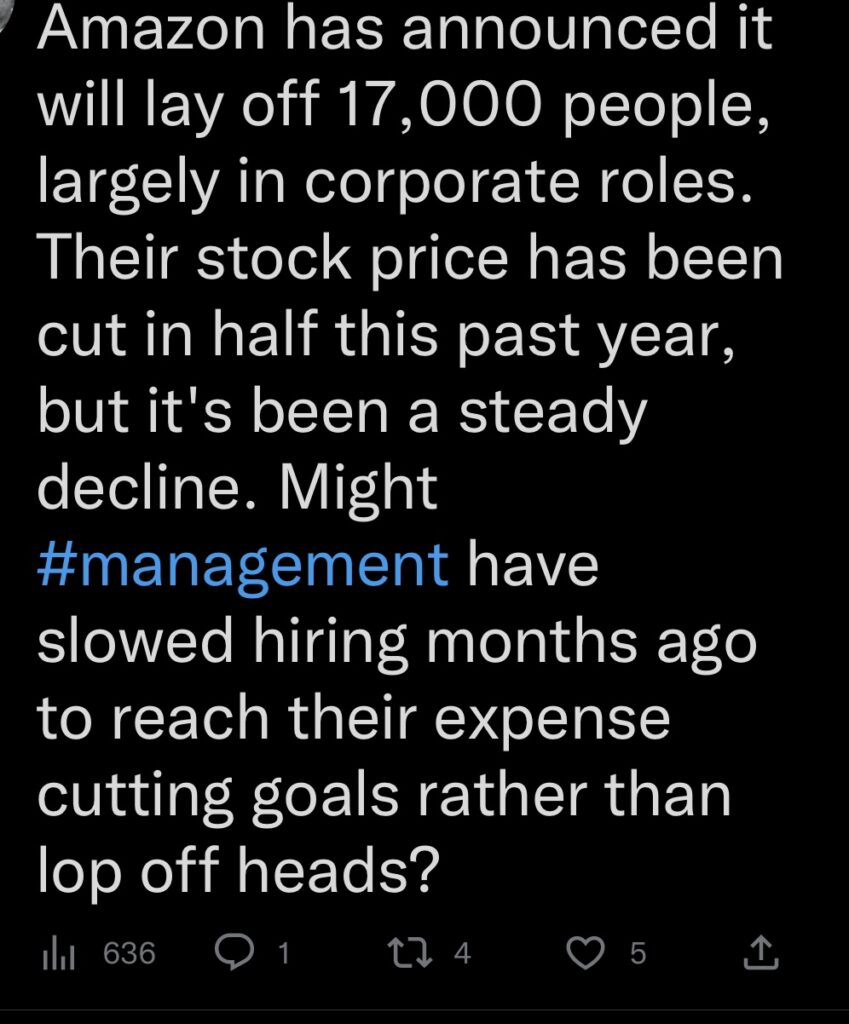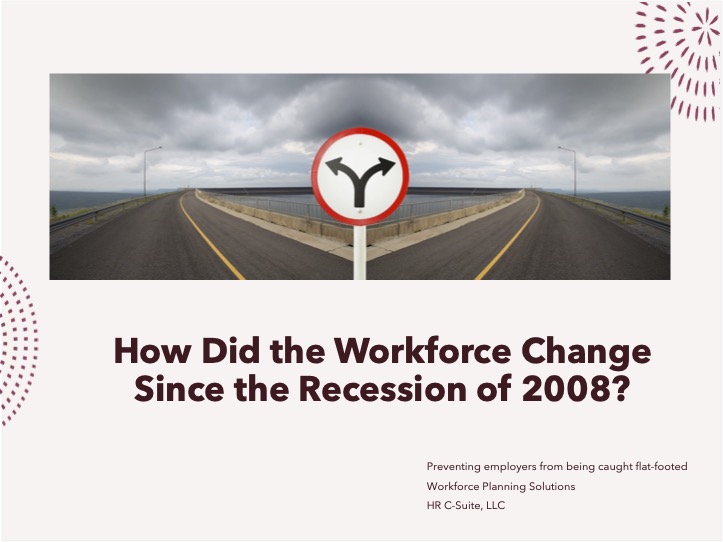During the 2008 great recession, I was a CHRO for a health system in California. We were thrust into responding to the market downturn and slow recovery. To remain viable, we had to make very hard workforce related decisions including but not limited to laying off 180+ employees, consolidating, and shutting down services.
I spearheaded a communication plan in partnership with leaders, that was designed to keep employees promptly informed at all levels and locations. I received countless messages of appreciation from across the organization. Team members appreciated being included and informed whether the news was good or bad.
Fast forward to today we are facing another economic downturn. To navigate economic uncertainties, it will be helpful to pick up lessons learned from 2008. But it is also critical to understand how a recession of today is different from the one in 2008 relating to the workforce.
These are lessons learned from 2008:
1. Fix what is broken now
If systems or processes are broken now, you may not have the financial or human resources to fix them later. Much like what I experienced in 2008 it came on quickly and suddenly we were inundated with never-ending meetings and analysis. We didn’t have the time to fix what was already broken and it was hard to execute on urgent cost saving initiatives.
2. Develop a scenario plan
There are many different types of financial scenarios that can happen. Recession, continued inflation, market crash, or increased competition. Each having their own unique challenges to every organization. While none of these we want, it would be good to have some idea of how best to respond for likely scenarios in advance and not be caught by surprise.
3. Quantify accurately and understand the true impact
Deciding who and when to lay off people is never easy, nor should it be. I’ve observed many times leaders will often choose those who are at entry level first. Think about it, how much will the company save by laying off someone at a $15 or less wage? It’s not very impactful, is it? Further when determining cost savings of a layoff it is common to forget that there is an upfront cost before savings is even realized. Costs of severance, PTO payouts, benefit payouts, reduced productivity, increased turnover of high performers will weigh heavy on cash flow, bottom-line results, as well as customer service.
4. Move swiftly and once
If layoffs are a must, this is not something to drag out or do repeatedly. Laying off people can potentially impact the culture, leadership credibility, and organizational reputation. Below is a Tweet that expresses the public sentiment relating to Amazon laying off thousands of people.

5. Beat the media.
Communicating early and often is imperative to maintain some level of morale. But also, to maintain trust and demonstrate respect for staff it is critical to communicate decisions with employees before it is reported in the news or social media. Reading about things in the news that impacts your job before hearing about it from leadership only serves to undermine leadership credibility.
How is a recession of 2024 different from 2008?
During the 2008 recession I was astonished to see our turnover numbers drop to nearly non-existent levels. The movement of the workforce slowed down during that timeframe although temporary. Workforce trends of today are not the same as 2008.
Here’s two things that have changed:
- Remote work: While there was some level of telecommuting in 2008 it wasn’t prevalent as it is today ushered in by the pandemic. Some companies have required a return-to-work policy. However, for remote work is still a force to deal with at least for right now. Assuming a workforce movement slow down like it did in 2008 is a mistake. Talent can still work virtually anywhere today.
- The Great Resignation…and it hasn’t ended yet: We’ve experienced record number turnover in recent years. It hasn’t stopped and a recession won’t slow it down. Survey results indicate nearly half of U.S. workers plan to quit to find another job in 2024 regardless of a recession.
Key Takeaways:
- Pick up lessons learned from the 2008 recession, but also note that the workforce has significantly changed this time around. Don’t be caught flat-footed with outdated assumptions.
- Employers still contemplating requiring workforces to return to the office because of a recession may want to think about that carefully.
- Top talent is already thinking of other employment and/or side work alternatives particularly with news of a recession. While considering workforce reductions due to financial concerns, it’s also critical to consider retention strategies for top talent.
- Even if the volatile economy hasn't yet affected your organization, conduct scenario planning now. Brainstorm different ways to cut costs other than layoffs should the need arise.
Leaders, how do you keep your teams motivated during economic uncertainty?
Latest posts by Tresha Moreland (see all)
- Recession 2008 Versus 2024: Lessons Learned and Key Workforce Differences - April 24, 2024
- Why Layoffs Fall Short: Embracing a Holistic Approach to Cost Savings - April 21, 2024
- Find Your Anchor In A Sea Of Fear - April 18, 2024













